"Milford Sound" 8x16" Oil on Linen by Richard Robinson
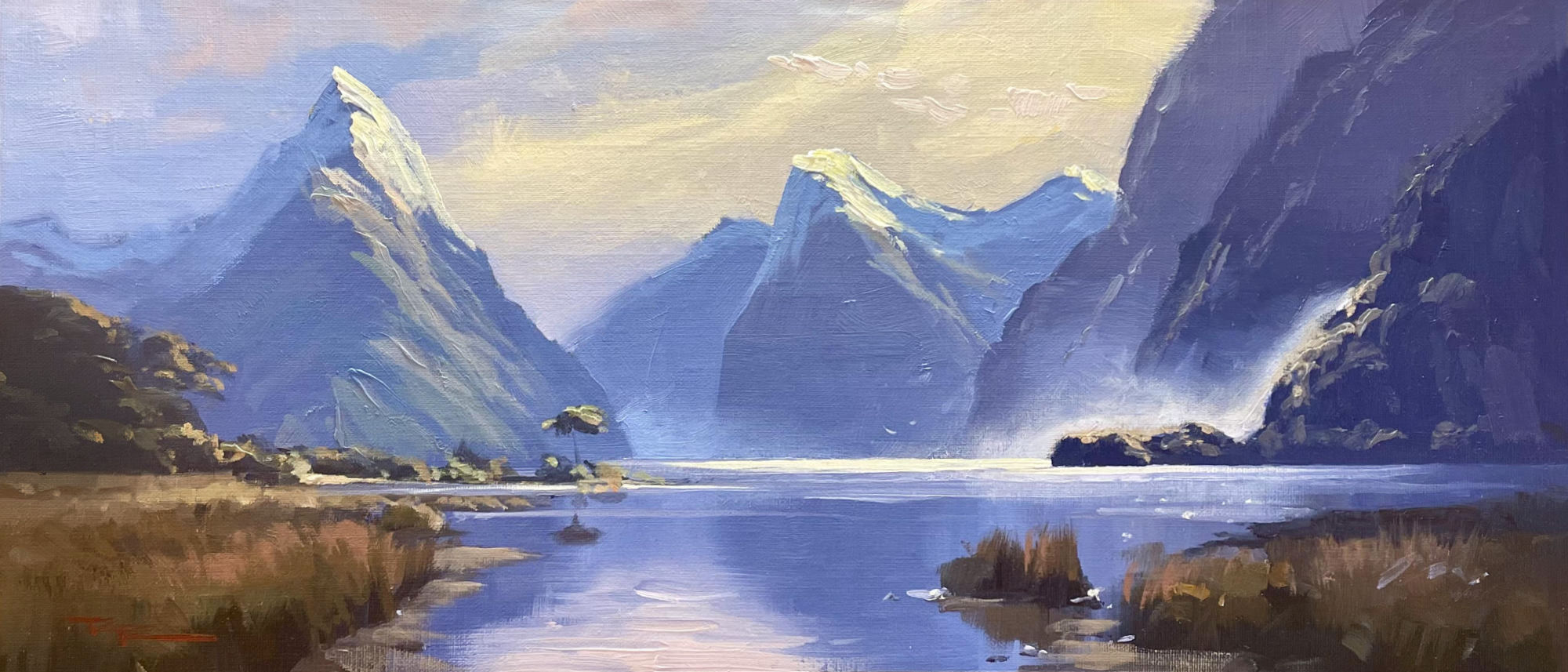
"Milford Sound + snow" 8x16" Oil on Linen by Richard Robinson (I fiddled after it dried).
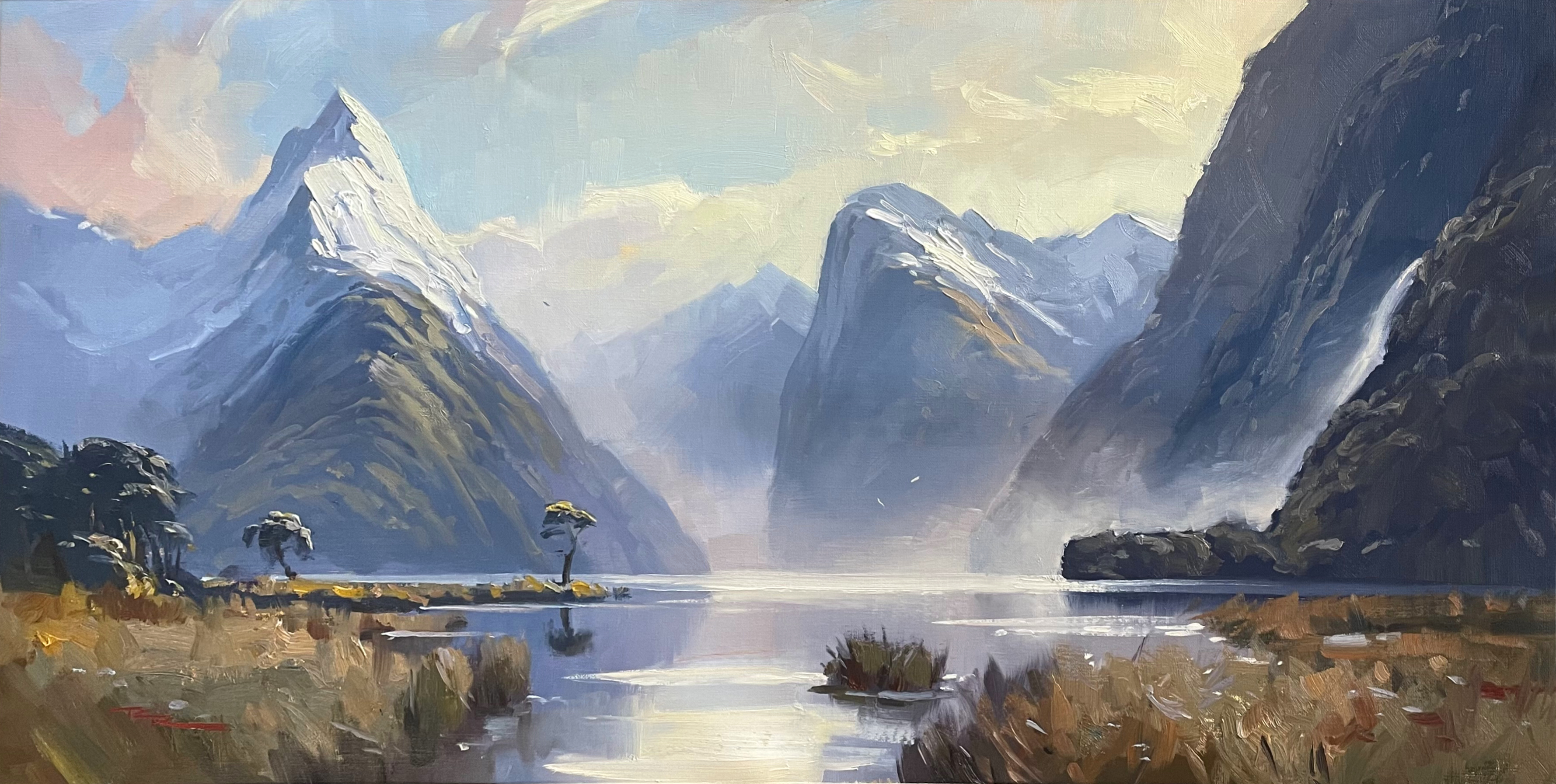
"Milford Sound 2" 14 x 24" Oil on Linen by Richard Robinson
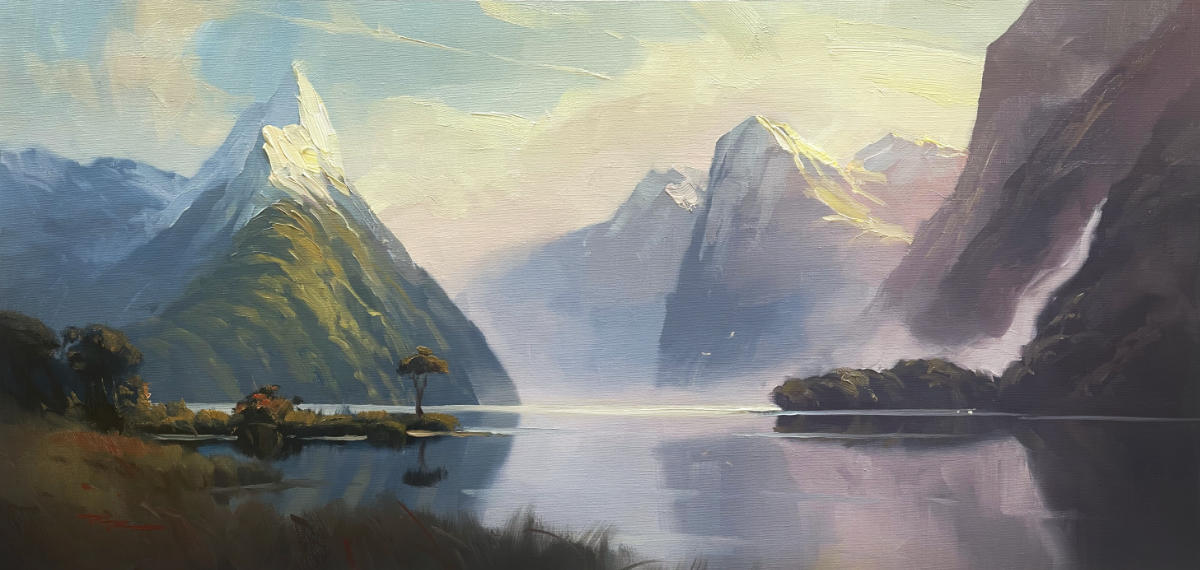
"Milford Sound 3" 13.5 x 28" Oil on Linen by Richard Robinson
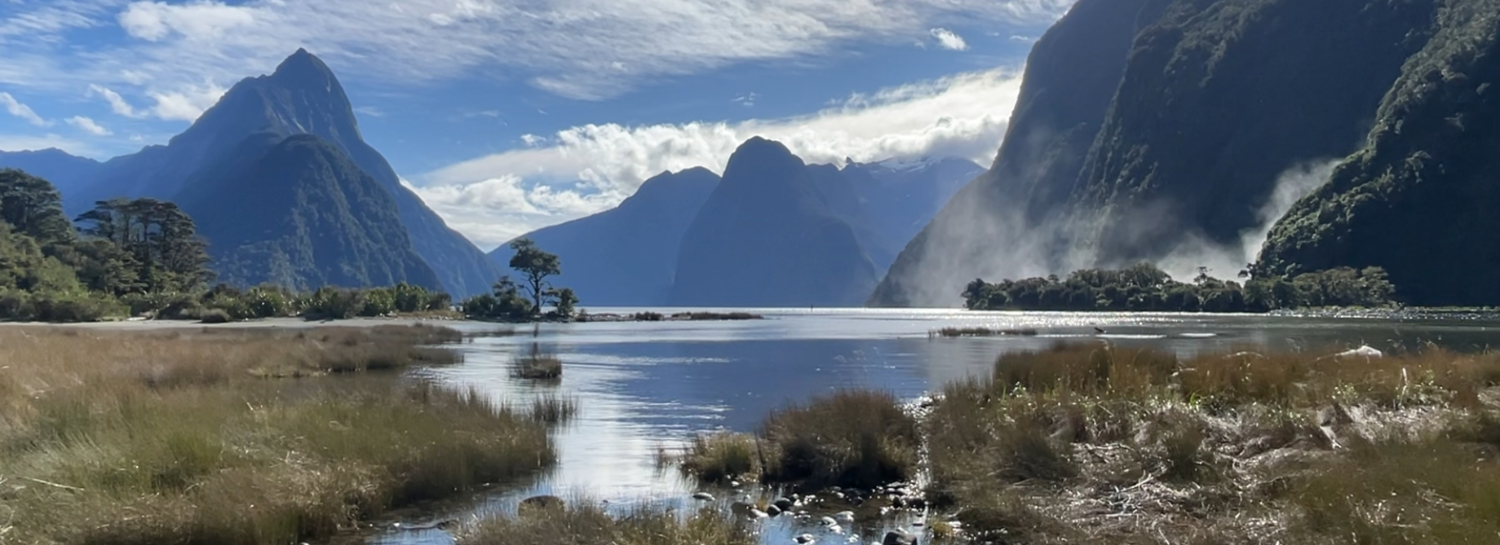
Resource photo of Milford Sound in New Zealand.
Painting the 8th Wonder of the World
Milford Sound is unbelievable. It's one of those rare places on Earth that has arranged itself as a perfect painting subject, perfectly side and back lit, that only needs to be put in a frame, with no alterations neccesary. It's also somewhere I've dreamed of painting since I was a child, since we had placemats of this scene that captivated me at each meal time and inspired my first ever landscape painting at the age of 12.
Creating Depth
This scene is all about grandeur and creating the illusion of depth. There are 7 visual tools we can use to achieve depth in a painting.
-
Scale makes foreground objects larger and background ones smaller to suggest distance.
-
Atmospheric perspective makes distant objects hazier and cooler in tone, while foreground elements stay sharp and warm.
-
Overlapping shapes define near and far by placing objects in front of each other.
-
Texture contrasts rough, thick strokes in the foreground with smoother ones in the background.
-
Colour uses warm, vibrant hues to advance and cooler, muted tones to recede.
-
Detail emphasizes sharp, intricate elements up close while softening those farther away.
- Linear perspective draws converging lines to a vanishing point, structuring spatial relationships.
We'll look at using all these tools in this painting so that you'll then know how to use them in all your paintings from here on in.
This demo is in oils but it's fine for acrylics too.
I'll take you step by step through this whole process. Just a couple of hours and you'll have a beautiful painting of a Milford Sound.
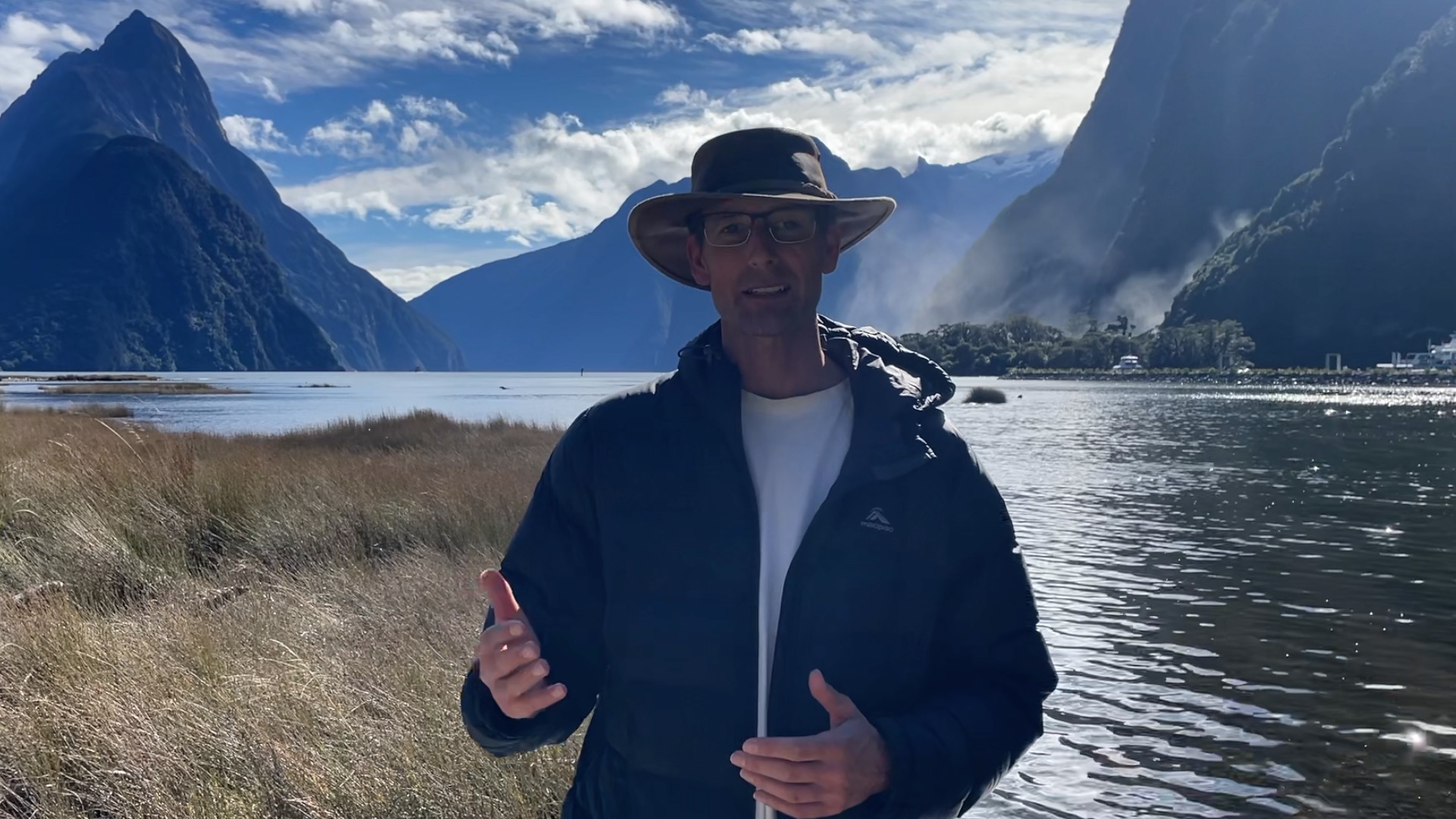
Just 5 steps
I’ll guide you all the way.
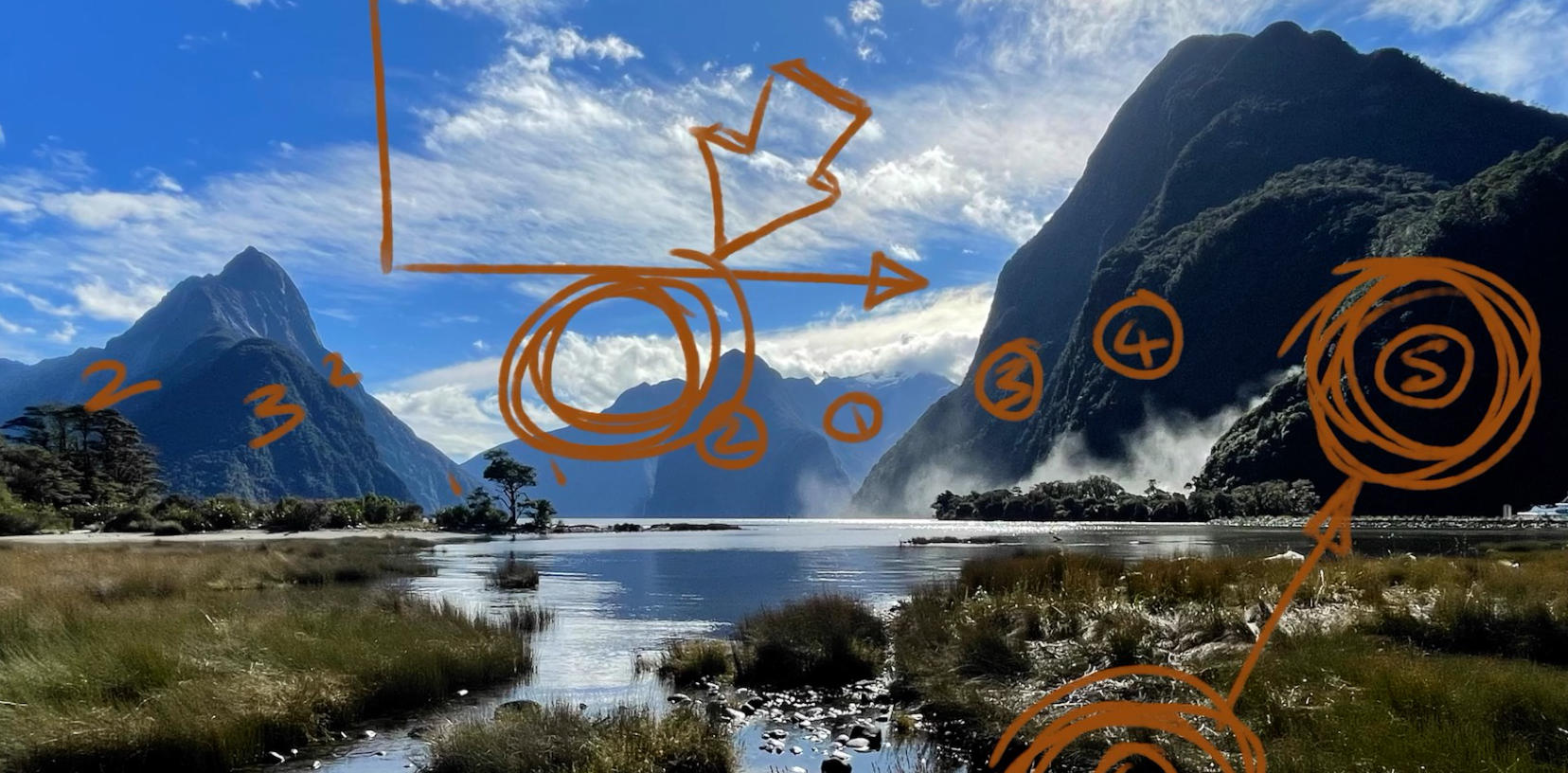
Overcoming Photographic Limitations
In backlit situations cameras tend to under-expose the darks, making them too dark. We can fix that by saving our darkest darks for the foreground, helping create more depth.
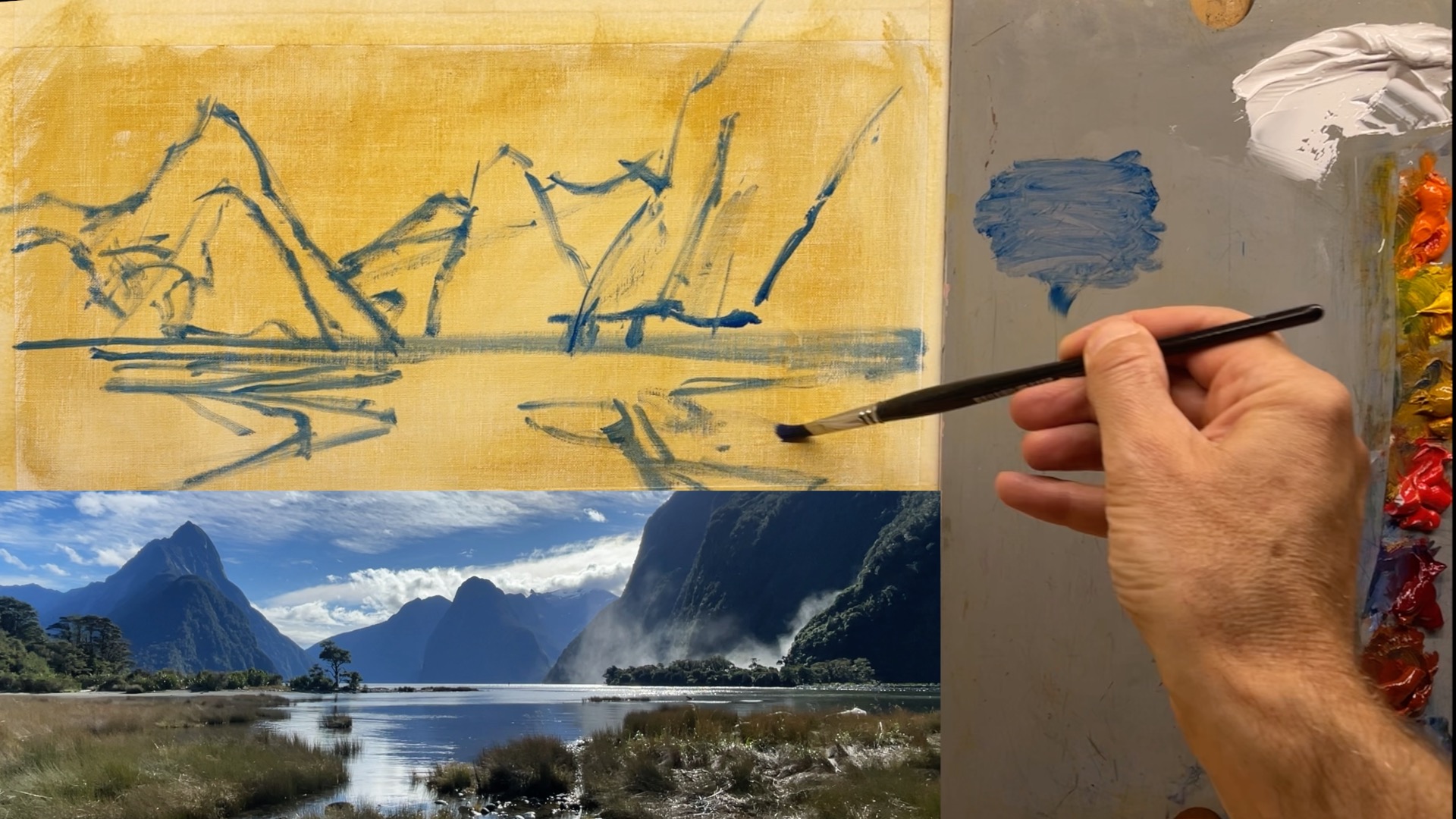
Sketching, Stretching and Squeezing
Smart phone cameras tend to shrink distant objects in order to squeeze a scene into the frame. Becoming aware of that is important. We can enlarge those distant peaks to compensate and regain their majesty. I've also squeezed the central area a little in order to make a slightly taller painting. Exaggerating the steepness and height of mountains is a time honoured painterly tradition.
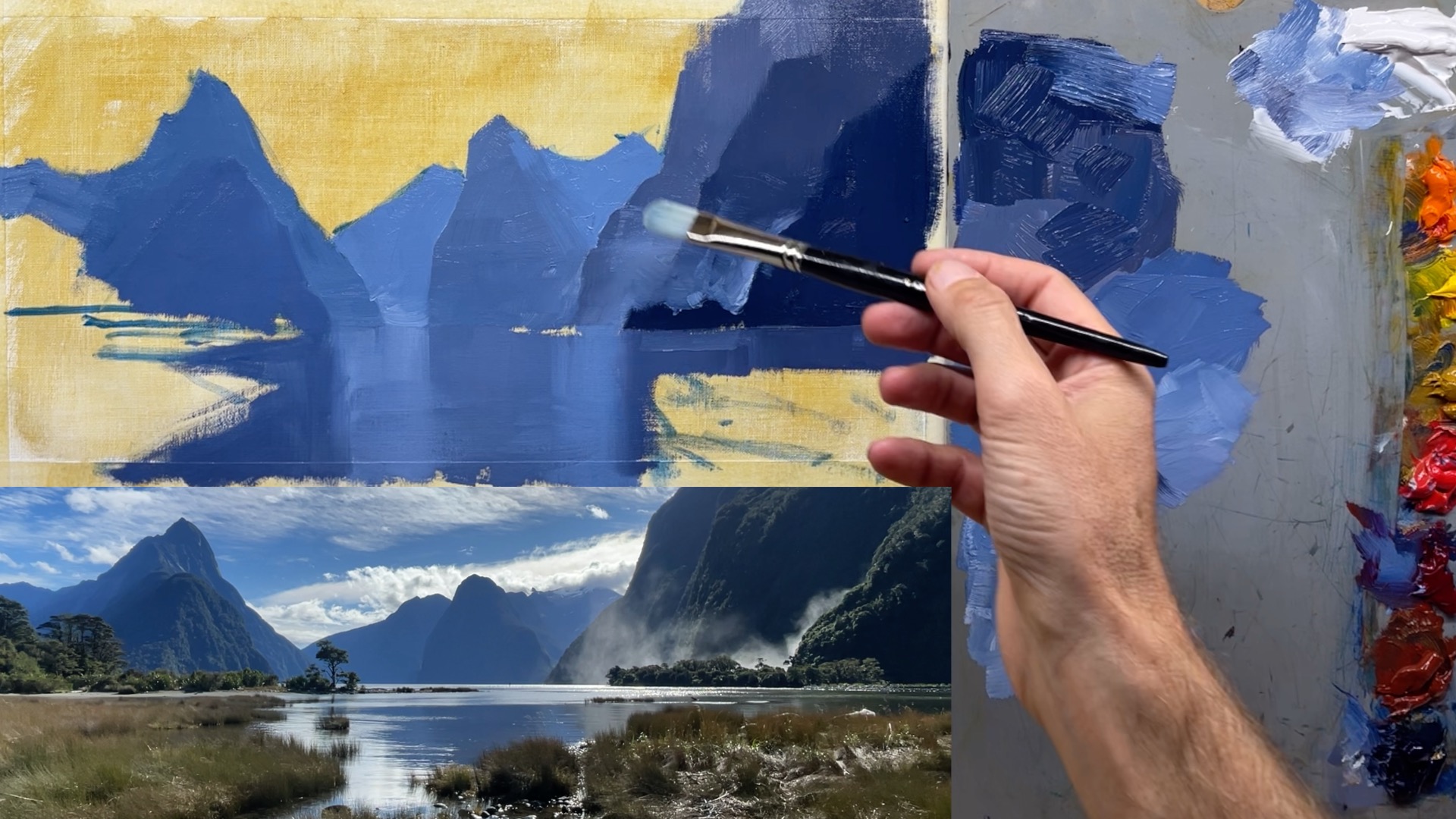
Layer upon layer
Seeing and mixing the subtle value differences between the mountains is key to creating depth here. Note that the colours get a little bluer on the left away from the warming glow of the sun. Light mist is employed at the base of the mountains to add a little more depth and mystery. We use the same colours to paint the blurred vertical reflections.
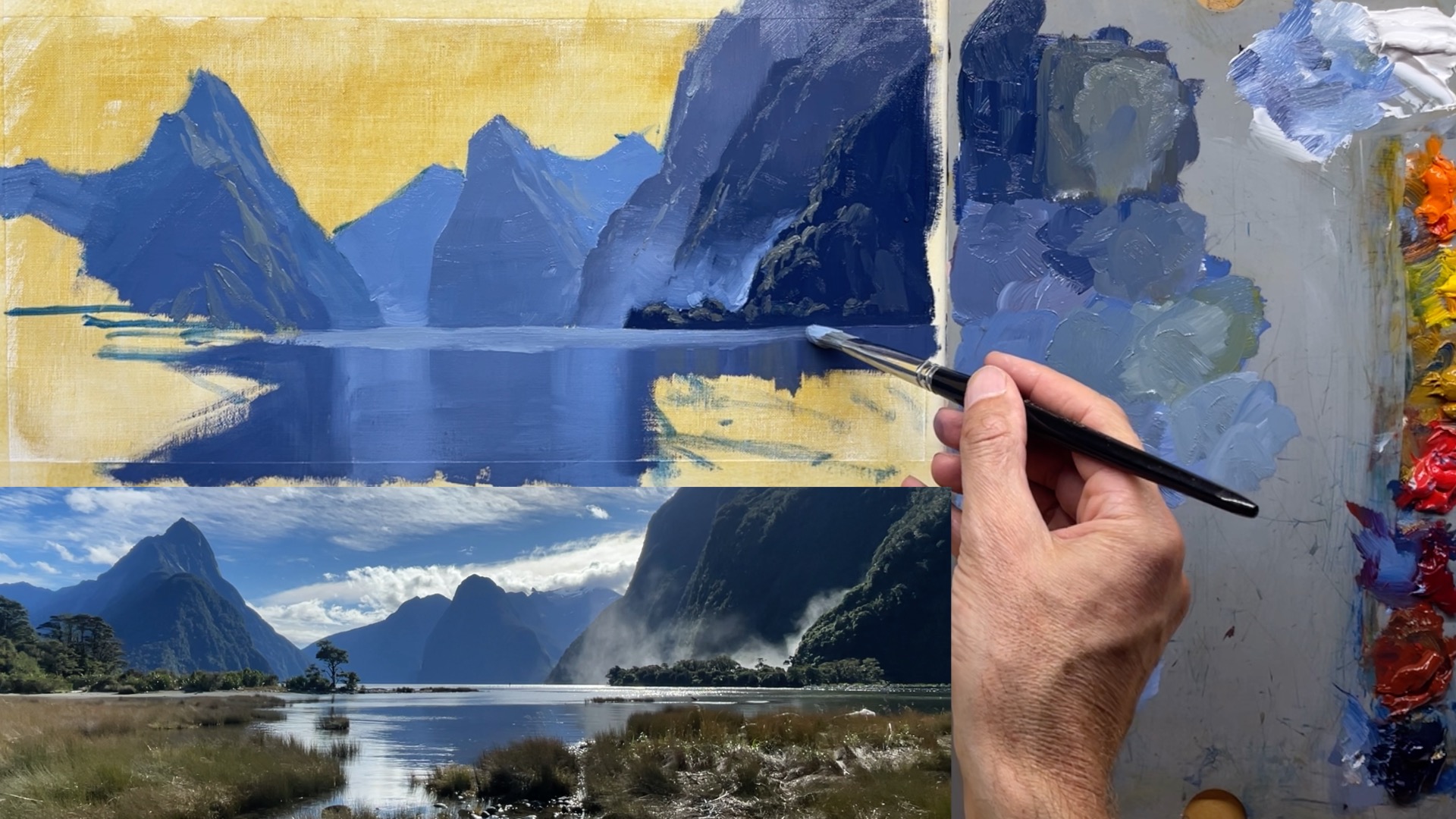
Light on dark
To create the sunlit mountainsides we mix from the individual mixtures saved on our palette from the mountain base colours. For each mountain the light colour is subtly different, but the goal is to mix slightly lighter, slightly greener colour than the base colour for each mountain. To do that we add white, orange and yellow, using a filbert brush to easily create the impression of trees.
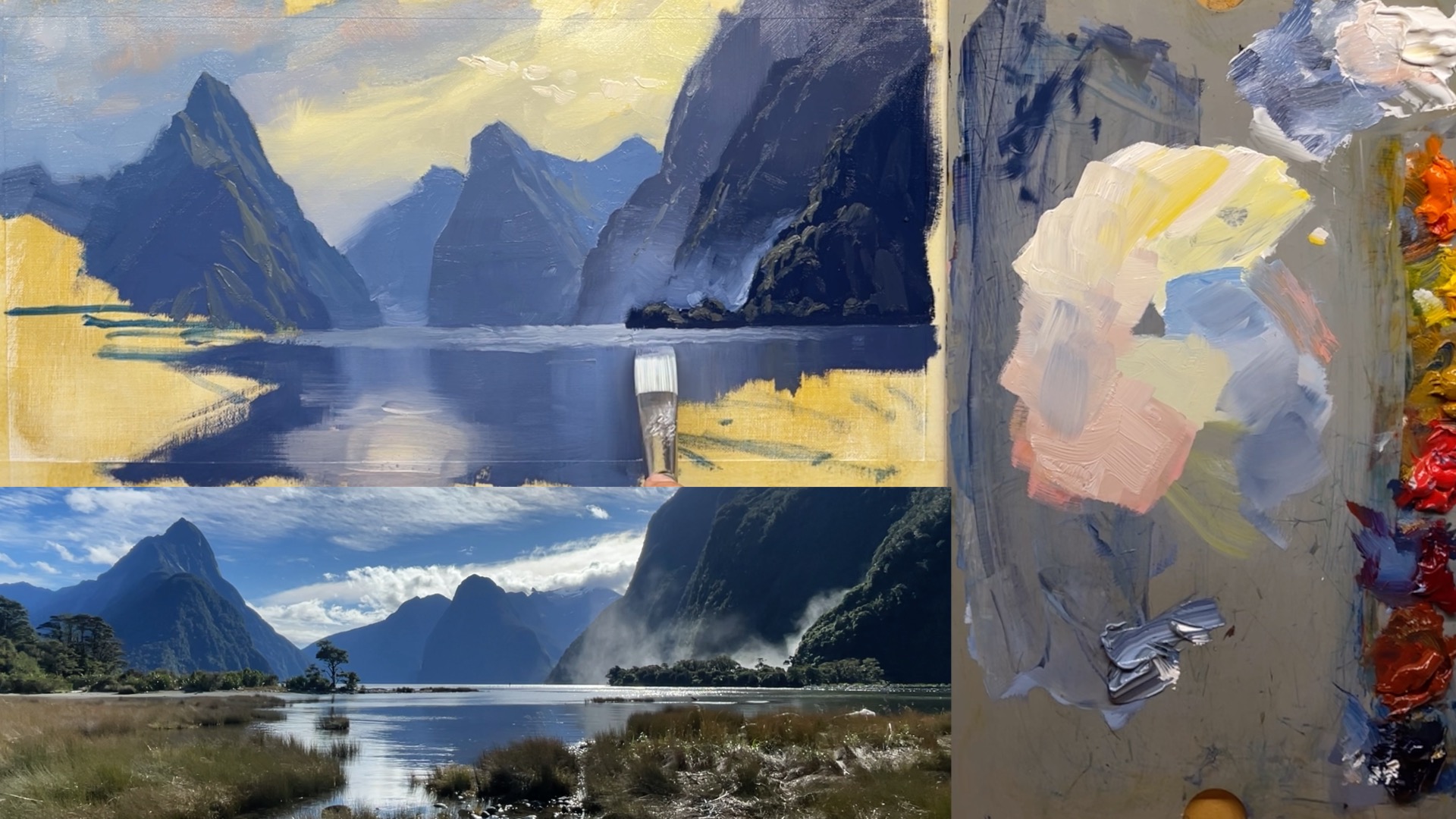
A warmer sky
To help balance all that cool blue grey in the scene we can add a warmer sky, lending it a slightly more romantic quality. While painting the sky we're also shaping the mountains and being careful to make soft edges contrast with sharp edges to help add more depth.
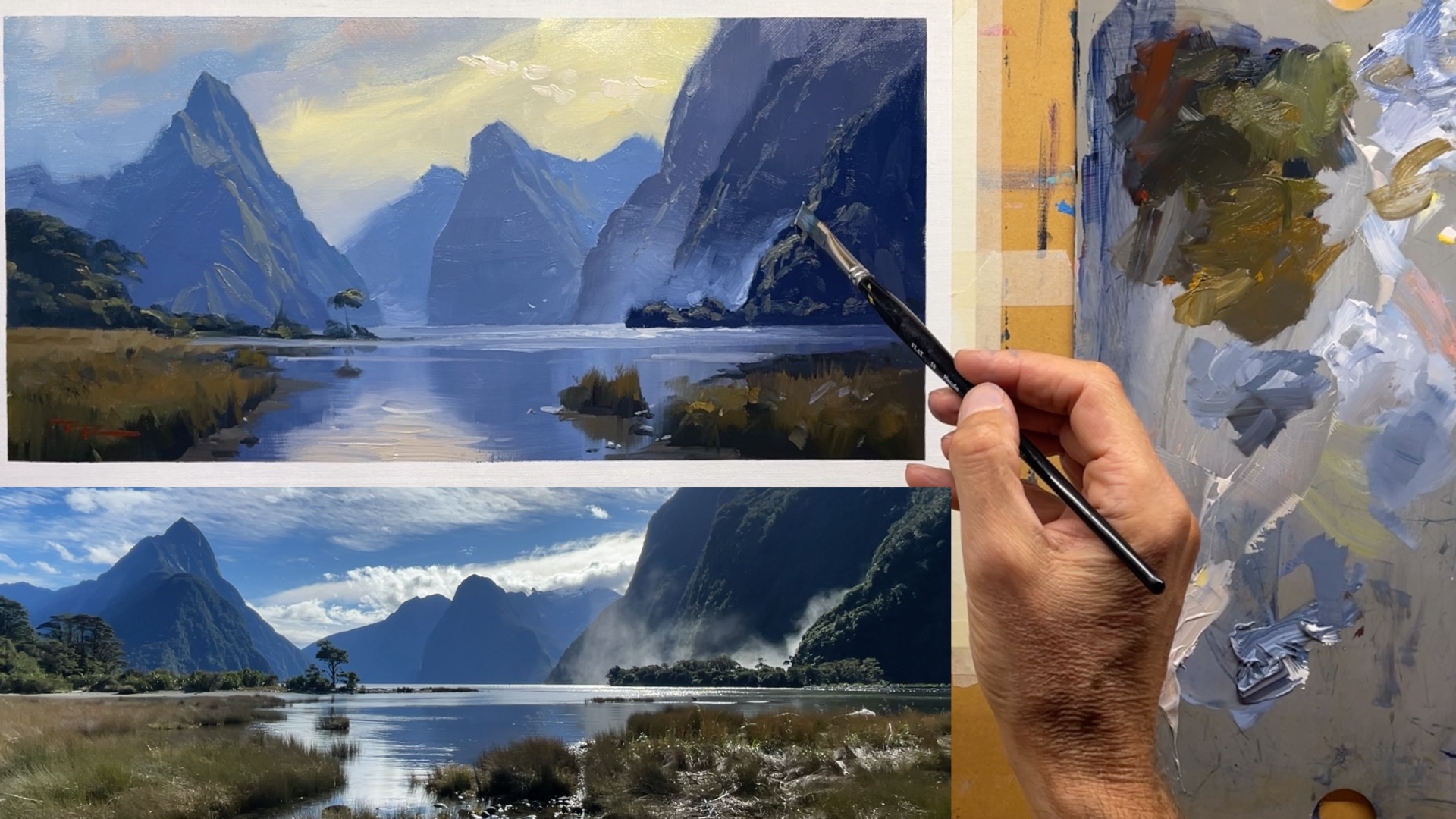
Foreground textures
A little thicker paint with more texture is employed in the foreground to help create the illusion of detail and to add depth by contrasting with the smoother background paint. A few crisp details are then added with a fine brush. And Voila!

"Milford Sound + snow" 8x16" Oil on Linen by Richard Robinson
Tweaking
A few changes for the better - adding snow and a warmer light in the waterfall mist and foreground grasses. Much happier!
I'll take you step by step through this whole rich process and you can choose which parts you'd like to try out in your own work.
“We keep moving forward, opening new doors, and doing new things, because we’re curious and curiosity keeps leading us down new paths.”
—Walt Disney
Enjoy!

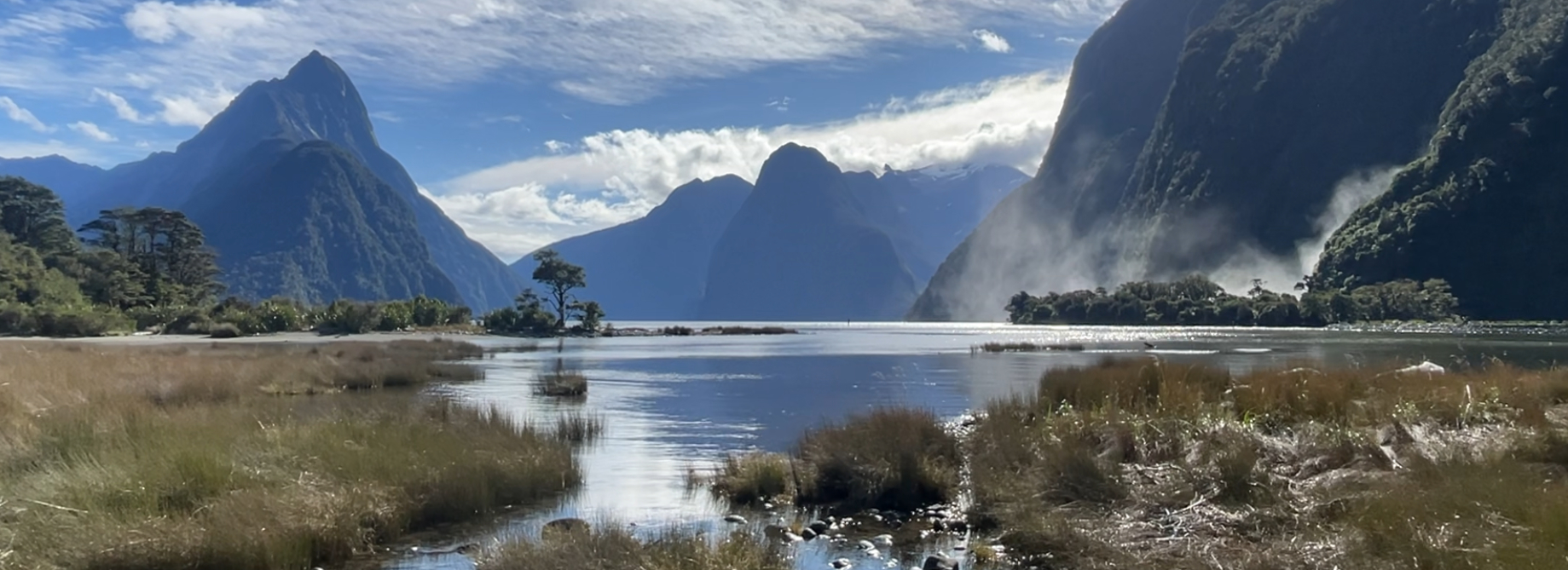
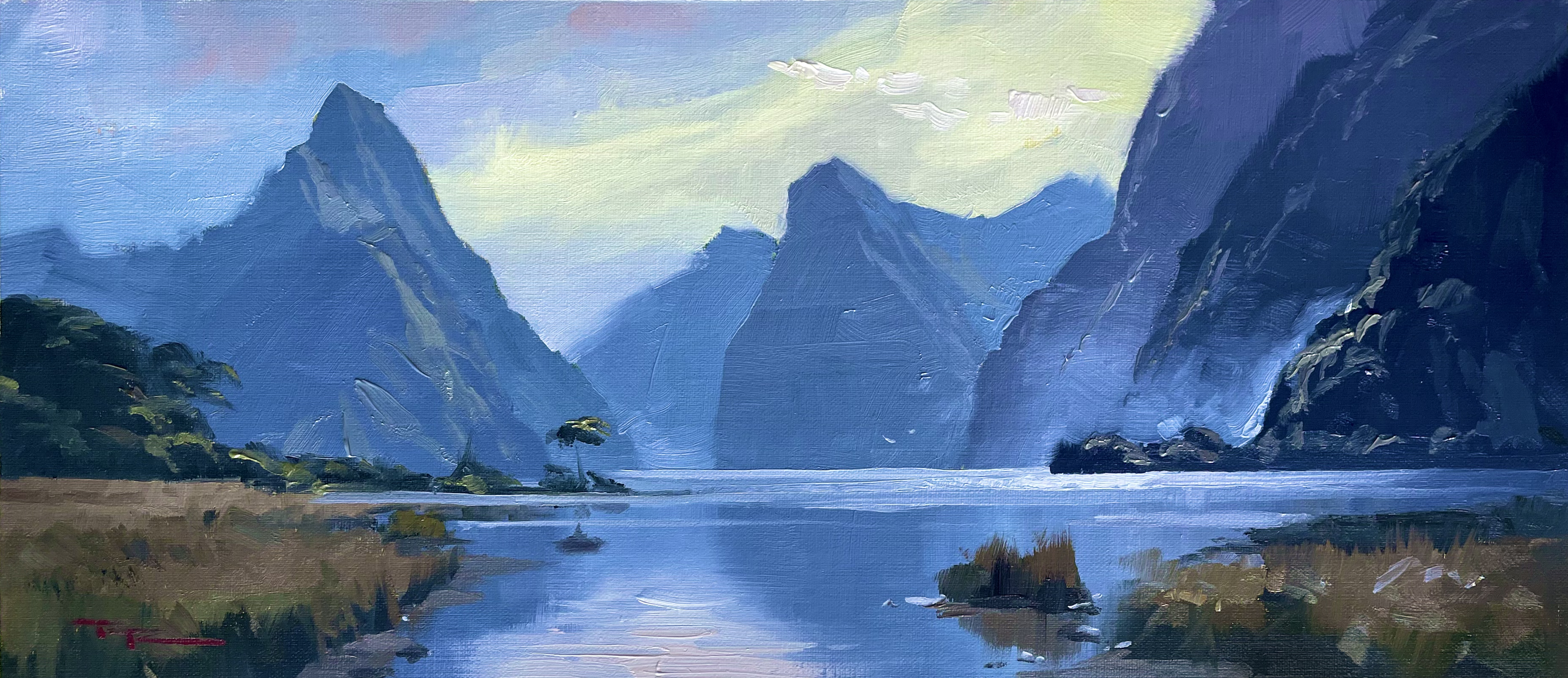
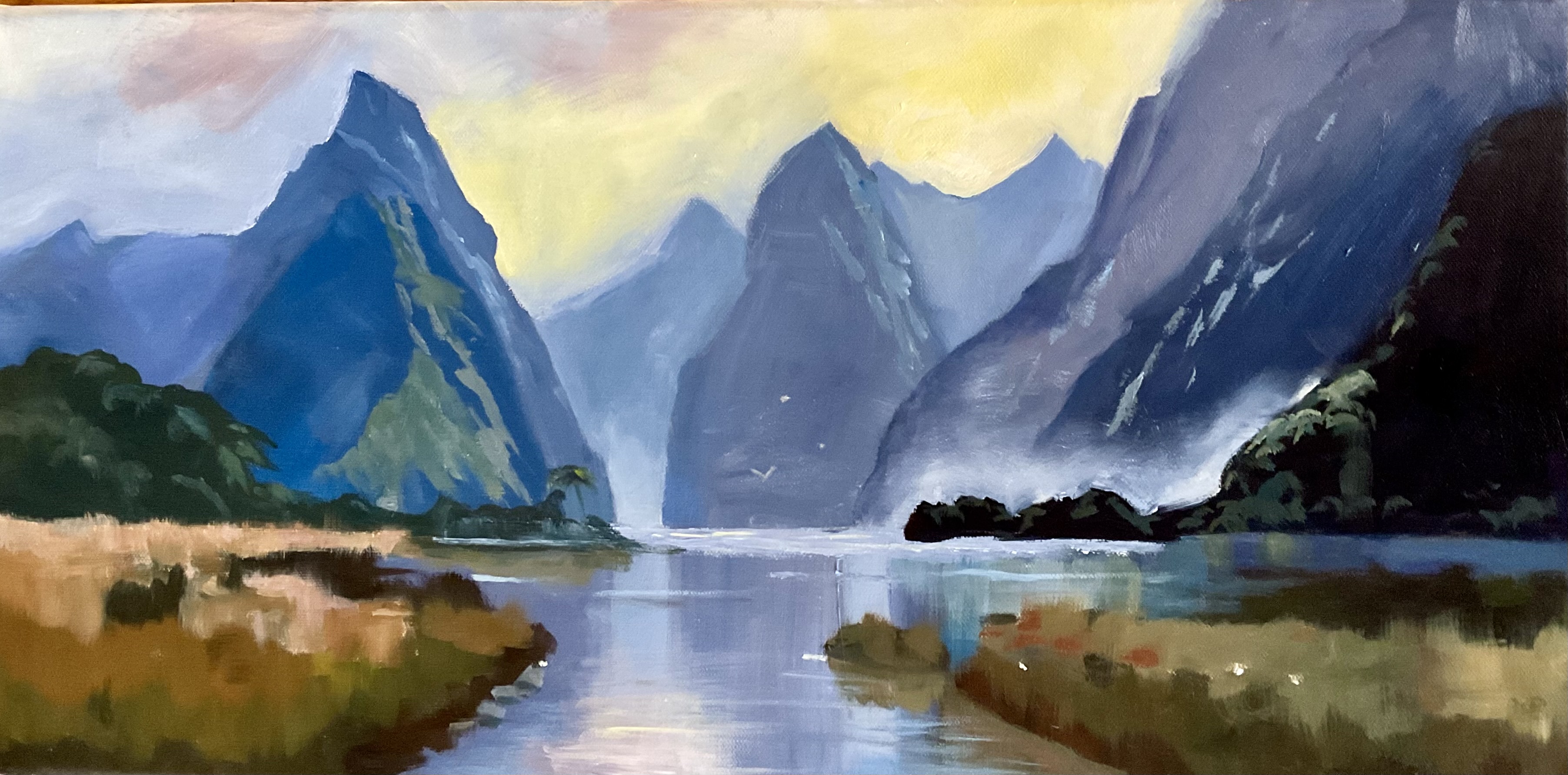
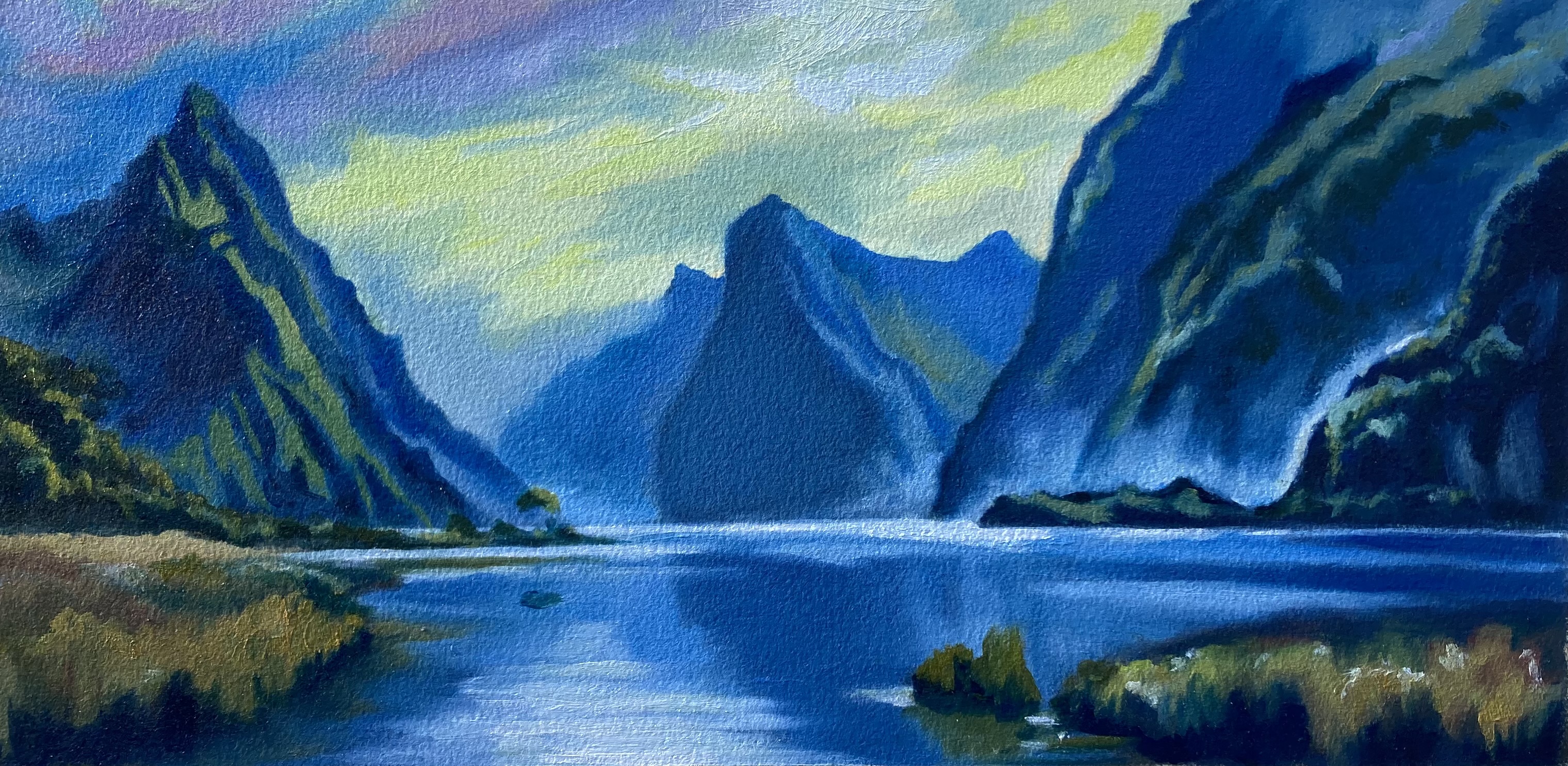
.jpg)

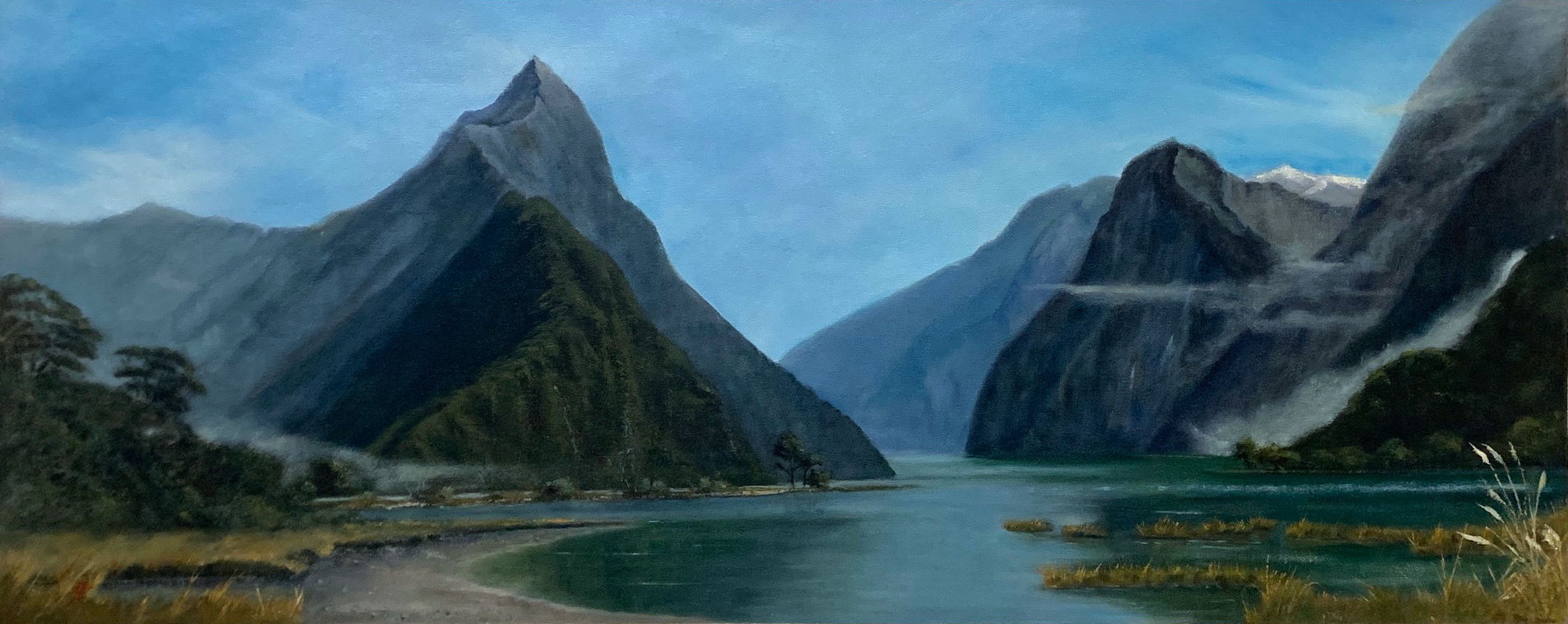
Login to your account to post a comment.